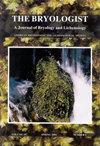一种新的地方病,俄勒冈Pannaria oregonensis,取代了北美太平洋西北部的两个误用名称
IF 1.5
4区 生物学
Q4 PLANT SCIENCES
引用次数: 1
摘要
摘要根据最近收集的样本的DNA序列,我们评估了太平洋西北部两个被列入名录的罕见Pannaria物种——P.rubiginosa和P.rubijinella的标本的分类地位。根据初步分析的结果,我们将这些数据与北美和南美洲其他Pannaria物种的新序列,以及来自P.rubiginosa和P.lurida群以及密切相关的P.hookeri的所有可用序列相结合。从历史上看,根据皮质与髓质的对苯二胺(P)反应,P.rubiginosa和P.rubijinella在太平洋西北部被分离。基于ITS序列的系统发育重建表明,这两种化学型都属于一个支持良好的分支,既不属于P.rubiginosa也不属于P.rubiginella。相反,太平洋西北部的物质似乎属于一个未描述的物种,在形态上与P.rubiginosa非常相似,但在基因和地理上与该物种不同,孢子较小。我们将这个新物种描述为Pannaria oregonensis,将太平洋西北部的所有物质都分配给这个分类单元,而不考虑P+反应的位置。这一结论得到了不同化学型共存种群系统发育分析的支持。我们建议将P.rubiginella从北美清单中删除。根据我们目前的了解,我们还提供了一个修订后的Pannaria北美物种的密钥。此外,基于对北美洲和南美洲Pannaria物种的新采样,我们表明有必要对Pannaria的中间物种,特别是广义的P.tavaresii进行修订。本文章由计算机程序翻译,如有差异,请以英文原文为准。
A new endemic, Pannaria oregonensis, replaces two misapplied names in the Pacific Northwest of North America
Abstract. We evaluated the taxonomic status of specimens representing two listed rare species of Pannaria in the Pacific Northwest, P. rubiginosa and P. rubiginella, based on DNA sequences of recently collected samples. We combined those data with new sequences for other Pannaria species in North America and South America as well as all available sequences from the P. rubiginosa and P. lurida groups plus closely related P. hookeri, based on results from initial analyses. Historically, P. rubiginosa and P. rubiginella have been separated in the Pacific Northwest based on the paraphenylenediamine (P) reaction of the cortex versus the medulla. Phylogenetic reconstruction based on ITS sequences demonstrated that both chemotypes belong to a single well-supported clade, and that it belongs to neither P. rubiginosa nor P. rubiginella. Instead, the Pacific Northwest material appears to belong to an undescribed species very similar morphologically to P. rubiginosa, but genetically and geographically distinct from that species and with smaller spores. We describe this new species as Pannaria oregonensis, assigning all of the material from the Pacific Northwest to this taxon, regardless of the location of the P+ reaction. This conclusion is supported by phylogenetic analysis of co-occurring populations of different chemotypes. We recommend removing P. rubiginella from the North American checklist. We also provide a revised key to the North American species of Pannaria, based on our current understanding. Furthermore, based on new sampling of Pannaria species from North and South America, we show a need for revision of the isidiate species of Pannaria, in particular P. tavaresii in the broad sense.
求助全文
通过发布文献求助,成功后即可免费获取论文全文。
去求助
来源期刊

Bryologist
生物-植物科学
CiteScore
2.40
自引率
11.10%
发文量
40
审稿时长
>12 weeks
期刊介绍:
The Bryologist is an international journal devoted to all aspects of bryology and lichenology, and we welcome reviews, research papers and short communications from all members of American Bryological and Lichenological Society (ABLS). We also publish lists of current literature, book reviews and news items about members and event. All back issues of the journal are maintained electronically. The first issue of The Bryologist was published in 1898, with the formation of the Society.
Author instructions are available from the journal website and the manuscript submission site, each of which is listed at the ABLS.org website.
All submissions to the journal are subject to at least two peer reviews, and both the reviews and the identities of reviewers are treated confidentially. Reviewers are asked to acknowledge possible conflicts of interest and to provide strictly objective assessments of the suitability and scholarly merit of the submissions under review.
 求助内容:
求助内容: 应助结果提醒方式:
应助结果提醒方式:


